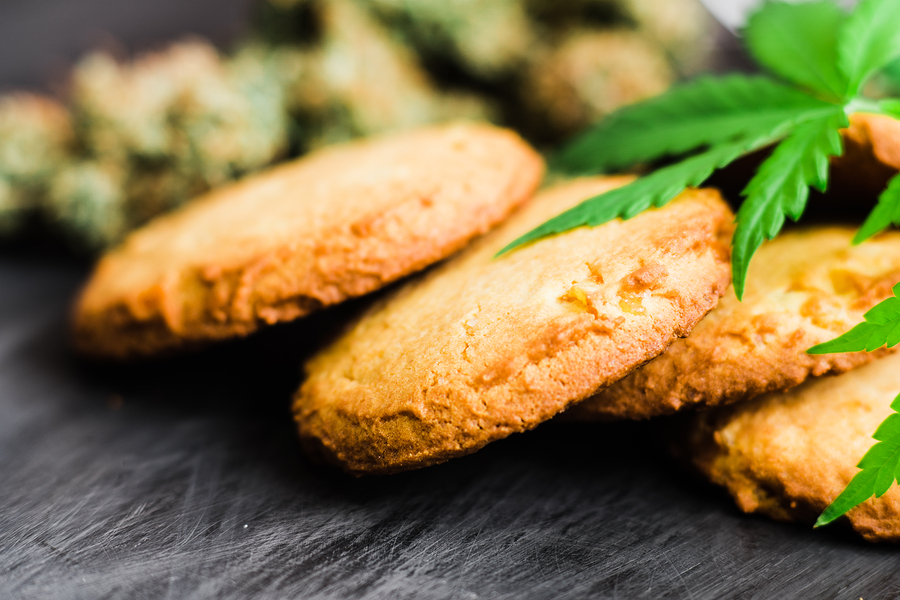
Food and beverage trends for 2019: Convenience, safety and more
The global food and beverage industry is poised for significant growth in 2019. Total revenues in the space are expected to surpass $1 trillion this year, while market penetration is forecasted to increase by more than one percentage point, according to data analysis from Statista. In short, businesses navigating the food and beverage arena have much to be excited about as the first quarter starts. However, a number of serious sector-specific shifts may complicate this sunny economic outlook. Food and beverage firms must therefore gain an understanding of burgeoning developments and make the operational adjustments necessary to finding success amidst change.
Here are three key trends sweeping the industry in 2019:
1. Plant protein gains steam
Vegan and vegetarian products have moved from the fringes of the food and beverage space to the mainstream. While the vegan and vegetarian populations have remained relatively stable – in the U.S., for instance, just 3 percent of adults say they are vegans and only 5 percent call themselves vegetarians, according to research from Gallup – more people worldwide are incorporating the specialty foods associated with these lifestyles into their everyday diets, The Economist reported. This is especially true for consumers in wealthy nations, where food and beverage businesses of all kinds, from fast sellers to grocers, are building out their vegan and vegetarian options. This development has generated great demand for plant-based protein, analysts for Nielsen found. An estimated 23 percent of eaters worldwide want more plant proteins, including almost 40 percent of Americans and 43 percent of Canadians.
For this reason, food and beverage giants such as General Mills, PepsiCo, and Tyson have made significant investments in plant protein production efforts and will continue to do so over the coming year as demand rises, according to a report from CBI Insights. At the moment, the global market for plant protein-based items stands at $11 billion with ample room for growth, the market research firm discovered. The businesses on the outside looking in on this trend would be wise to cultivate new production lines to accommodate the expanding number of consumers here and abroad demanding vegan and vegetarian products.
2. Direct-to-consumer becomes key
Food and beverage manufacturers have long relied on retailers to stock and sell their products. While this model continues to be the industry standard, a major marketplace force is testing its viability: the emergence of the private label. Traditional grocers such as Walmart and Target have cultivated high-quality, low-cost in-house offerings that they position as alternatives to brand-name products. Such items are extremely appealing to consumers, virtually all of whom prioritize both quality and value above all else. In fact, private labels products are already outperforming their branded counterparts, according to Nielsen. That said, longstanding food and beverage manufacturers are fighting back by attempting to eat up grocer market share via direct-to-consumer initiatives, CBI Insights discovered.
Big brands such as Ben and Jerry’s, the Campbell Soup Company, and the Coca-Cola Company have launched formalized D2C programs, transforming their static websites into online shopping portals where customers can order their favorite foods and beverages without visiting the supermarket, Grocery Dive reported. This approach will become necessary in 2019 as more retailers roll out private labels and expand existing offerings, which consumers already believe are on par with branded lines, per Nielsen. However, the food and beverage businesses that embrace D2C should know such a change will cause significant internal disruption, as partners become marketplace adversaries – a paradigm shift that upsets supply chain operations, according to Food Logistics.
3. Cannabis-based food enters the mainstream
Today, adults in 10 U.S. states and the District of Columbia can use marijuana recreationally. The widespread legalization of the substance, which began in 2012 when voters in Colorado and Washington D.C. passed the first marijuana decriminalization measures, has created a healthy niche market for cannabis products in the U.S., analysts for Grand View Research discovered. The space is expanding at an immense compound annual growth rate of almost 35 percent and is poised to top $146 billion by 2025. Edibles, or cannabis-infused food and beverage items, are among the most popular marijuana products within this growing market, according to Technavio. American consumers spent more than $16 billion on these items in 2018, accounting for 75 percent of the global market, which totaled more than $21 billion last year.
Another growing trend that has caught wind in its sails is the movement of products containing cannabidiol, or CBD — a compound derived from cannabis. Innovators in the market, such as TONIC CBD, are creating unique ways to consume the product that provides natural benefits, as per Newsday. Consumers can choose from ingestibles to inhalants and sublinguals (under the tongue). Use of CBD has gained so much traction that there are even treats for your dog that contain the oil.
This food and beverage arena is expected to continue moving forward in 2019, as buyers in states where cannabis has been decriminalized set aside more money for edibles and new consumers enter the fray due to additional developments in legalization. Last year, 21 states put forth ballot measures aimed at legalizing marijuana, with six of these pieces of legislation passing. With 62 percent of Americans in favor of legalization, similar measures are bound to materialize in 2019, according to Pew Research Center. Of course, this data does not take into account the international market, which added Canada in 2018 due to a nationwide legalization effort. Businesses in the food and beverage space must reckon with this development and decide whether they wish to enter this growing yet controversial space.
As food and beverage manufacturers grapple with these major developments over the next year, they may find themselves in need of external assistance. USC Consulting Group can help. We have been working with organizations in the food and beverage industry for more than five decades, helping them transform their operations and adapt to marketplace shifts of all kinds.
Connect with us today to learn more about our experience and how we can help your firm adjust to these and other food and beverage trends.






